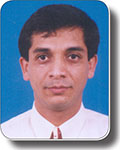A new generation inflow performance modelling tool with improved capabilities
Akim Kabir A and Yvette Manolas BA Curtin University of Technology
B Woodside Energy
The APPEA Journal 49(1) 413-424 https://doi.org/10.1071/AJ08025
Published: 2009
Abstract
The inflow performance prediction of a completion is one of the most important tasks in forecasting production performance of a well. When selecting an optimum completion design it is essential to compare different options and perform parametric studies, one of the key completion decisions being the selection of a cased and perforated or barefoot well. In cased and perforated wells, key inflow performance parameters include gun type, perforation penetration depth, shot density, shot phasing, depth of mud invasion and dependence of their effects on reservoir properties. The open literature hosts a plethora of inflow equations for some classic completion practices; however, complex options are not adequately addressed. More importantly, when one compares inflow performance of various completion options or conducts a parametric study of certain parameters, the relative calculation results do not always make sense.
In this paper, we describe an operator’s (Shell International Exploration and Production) in-house study to develop a consistent set of inflow performance equations that not only make sense in their own right, but also make good relative sense when comparing different completion options, particularly with regard to cased and perforated wells. Most of the significant open literature has been reviewed and a set of consistent inflow models have been compiled and developed. Many equations have been improved—e.g., perforation skin calculations, mechanical and total skin calculations, rate dependant skin for horizontal completions—and new equations have been derived for options not previously modelled in the literature (e.g., barefoot and perforated completions, double perforated completions, re-perforated completions and complex horizontal completions). All equations have been coded into the Shell Perforation Optimisation Tool (SPOTTM) software package, enabling engineers to easily and accurately predict and compare complex completion options for design decisions. Inflow performance calculation results of various completion scenarios and parametric studies are also presented.

Akim Kabir is a senior lecturer at the Department of Petroleum Engineering at Curtin University of Technology, Perth, where he teaches in the areas of production, completion and reservoir engineering. He has worked in the oil and gas industry for about 17 years before joining the academia in 2004. His research interests include near wellbore reservoir and inflow performance modelling of various completion types, completion optimisation, reservoir and production system integrated simulation, water shutoff, production optimisation and enhanced oil recovery. Previously he has worked with CSIRO Australia and ESSO Australia Ltd as a simulation scientist and reservoir engineer respectively. Prior to joining Curtin in 2004, he also worked for Petronas Carigali, Malaysia as a staff production reservoir engineer where he was involved in various aspects of reservoir and production engineering. He has authored several technical papers in various fields of petroleum engineering. He has served the Society of Petroleum Engineers (SPE) in various capacity ranging from program chair, section chair to AWT chair. Akim holds a BS in chemical engineering and an MS in petroleum engineering from Louisiana State University, Baton Rouge, Louisiana (1986). Member: SPE and Institute of Engineers Australia. kabir@peteng.curtin.edu.au |

Yvette Manolas worked on this paper while she was seconded to Shell International Exploration and Production. She is from Woodside Energy Limited. Yvette Manolas graduated from the University of Western Australia with a BEng (First Class Honours) and BCom. She has worked at Woodside Energy Limited for seven years as a petroleum engineer, including an 18 month secondment at Shell International Exploration and Production in the Perforating Global Delivery Team as a subject matter expert. A representative of API SC 19 (Task Group on Perforating), Yvette has chaired and presented at international perforating forums and symposiums. Other papers include Sanchez, Kabir, Nakagawa & Manolas, 2007, Integration of reservoir and well flow simulators for analysis of horizontal well performance, APPEA Journal (1), 179–86. yvette.manolas@woodside.com.au |


